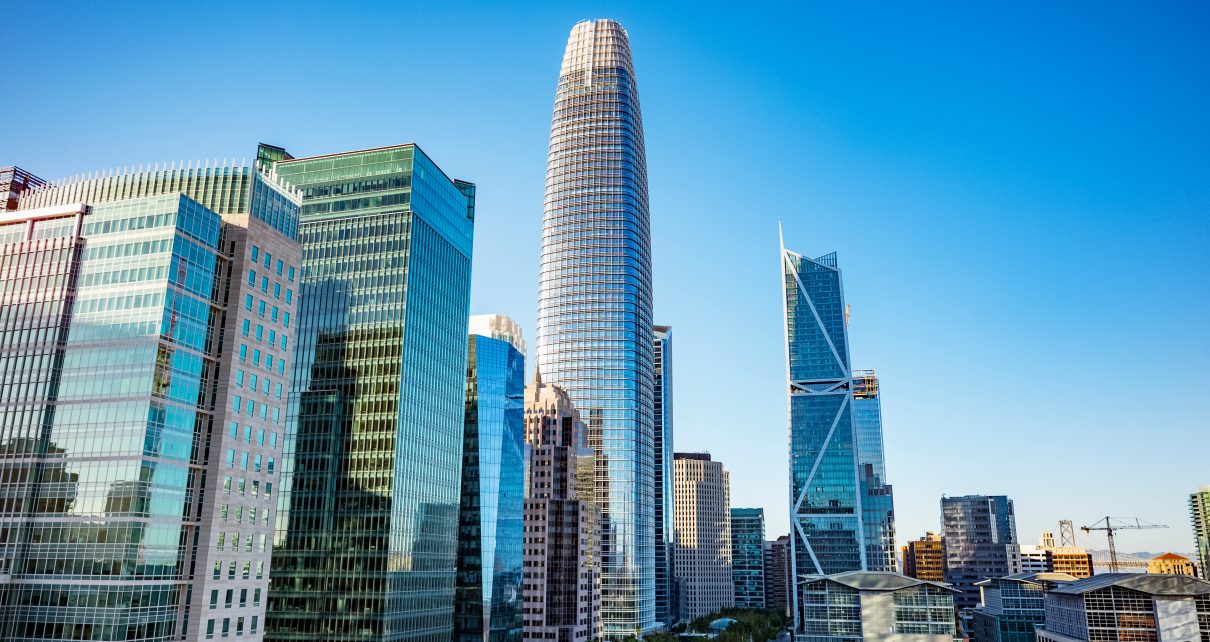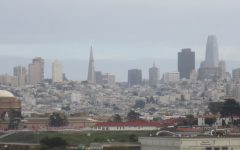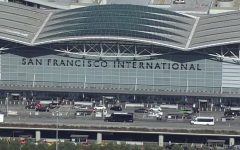
San Francisco City Downtown, California. (Photo: Lynn Yeh/Shutterstock)
San Francisco Office Occupancy Still Under 40% Despite Ending Mask Mandate
SF has only slowly improved on occupancy in the last few years
By Evan Symon, October 8, 2022 2:30 am
According to a new report by the security firm Kastle, San Francisco’s total downtown office occupancy sat at 39% in late September, one of the lowest amounts in the nation despite having seven months since the lifting of mask mandates in March.
Prior to COVID-19, San Francisco’s office occupancy percentage was constantly at or near 100%, with many companies, especially tech firms, fighting for office space. However, following the beginning of the COVID-19 pandemic in March 2020, occupancy free-fell to under 10%. Throughout 2020, the rate struggled to stay above 10% as companies refused to move back into offices because of the high number of restrictions, as well as more companies liking the new remote work setup. This led to downtown businesses, reliant on people coming into the city for work, being decimated as a result.
2021 proved to be little better, as tech workers continued to stay home, and many businesses began switching over to models that included working from home. Office occupancy did manage to rise to near 30% by the end of the year, but with restrictions still in place and a new wave of COVID-19 sweeping in, occupancy rates cratered to just above 10% once again, even with laxer state mask exemptions specially given for the city due to the high vaccination rate.
In early 2022, with local businesses on the brink of bankruptcy, the city finally began making pushes for a revived downtown, starting with a more relaxed mask mandate that January. Mayor London Breed began working with businesses leaders in February to bring workers back downtown, with the mask mandate then finally being lifted in March. By May, Mayor Breed gave over $40 million to help surviving small businesses in the core of the city survive.
“While San Francisco is bouncing back from this pandemic, we continue to see major shifts in our city, and we see that in our Economic Core more than anywhere else,” said Mayor Breed in May. “I’ve been visiting businesses large and small, and while it’s clear we are all committed to adapting and thriving as part of our long-term recovery, our small businesses in these downtown areas cannot wait any longer. They need all of us dedicating our energy and resources to help them in the short-term, as we continue to do the work to get our city back on track.”
San Francisco stays under 40% business occupancy
Despite a strong summer, with COVID not making a major resurgence, office workers still stayed away from returning to offices. Salesforce Tower, the largest in San Francisco, still remains nearly empty, which is compounded by Salesforce itself still remaining largely remote. And, according to the new information released on Friday, San Francisco is only at 39%, a far cry from the fights over office space that occurred in 2010’s, and well below rival cities such as Austin, New York, and Los Angeles, which currently sit with occupancies at 61%, 46%, and 45% respectively.
While many companies do have plans to return to work downtown at least part-time, including Uber, others, like Salesforce, have said that office mandates can no longer work due to staff wanting more remote work and companies saving money by not renting out pricey downtown offices.
And, unlike the more traditional industries and need of specialty industries, such as the entertainment industry, needing offices within other Californian cities such as Los Angeles and San Diego, the high percentage of tech companies in San Francisco, mixed with high rent costs and changing office worker values, continues to spell lower occupancy for the City by the Bay.
“San Francisco put a lot of their resources aimed at tech companies, and while that may have been a blessing last decade, them refusing to bring back workers to offices, or just plain leaving the city, have hurt San Francisco,” explained Michelle Duggan, a building occupancy researcher, to the Globe on Friday. “The pandemic and the Great Resignation have changed how many see work. Many really like working remotely. No long commutes, no idiotic office politics, no high gas and vehicle repair costs. You get to work at home and even run errands during the day or stay with pets and kids.
“Even more, tech firms are ore wired to do this, adding to the reluctance on their part. For an average city, right now occupancy is at 45% to 50% nationwide. San Francisco, and their tech heavy presence, is below that. In fact, many offices are just open for a few days, meaning Monday through Friday occupancy is still very much lower right now based on the majority of companies having a mixed home/office schedule now. Cities were not prepared for this new shift, and their efforts in bringing companies back into offices are countered by employees who have said they would switch jobs to avoid working in an office again. Cities like San Francisco need to realize that it will never be the same, that they bet on the wrong industry to keep a a presence there in the end. But that’s not happening right now. And probably will continue to do so as many companies may nix offices in favor of more remote work as a recession mounts.”
Occupancy is expected to reach above 40% in San Francisco by the end of the year.
- Bill to Require Law Enforcement Disclosure if AI Was Used To Help Write Reports - August 7, 2025
- Gov. Newsom Files FOIA Request To ‘Expose True Cost’ Of L.A. Federal Troop Deployment for Anti-ICE Riots - August 6, 2025
- California Redistricting: How Newsom’s Plan Will Demolish Hard Fought GOP Gains - August 6, 2025





“. No long commutes, no idiotic office politics, no high gas and vehicle repair costs. You get to work at home … during the day or stay with pets and kids.”
^^^THIS!!!
At $6+ a gallon of gas, being forced to drive into the office is approximately a $400-500 PER MONTH cut in pay, thanks to our stupid-assed California government mandates and fuel tax structure…
Factor in a dumbass, World Economic Forum “Young Global Leader” Governor who wants to virtue-signal California’s. “transition” to an electric vehicle centric state (without enough power generation infrastructure to sustain it) and who needs the hassle, stress and EXPENSE…
#FGN
leave then…..tech workers suck
You could have mentioned the explosion of homelessness, overdoses, drug dealing, filth, and the failure of SF to keep the streets safe and prosecute thieves and degenerates, as major contributing factors weighing on both companies and individuals. Commuters are plagued by
an explosion of car break-ins, and BART is overflowing with the homeless, both on trains, and in drug dealing at many stations.
It turns out people don’t want to work if it is not safe.
Correct observation by Rob – seemed like a glaring omission in the reporting. While I have not worked in SF since the 1990’s, I was often going to live music often before the pandemic. No longer – I will not risk the car break-ins and possible vehicle theft; using UBER just takes more time and they have become a bit unreliable lately. While I have had to conceal-carry now for safety, I cannot get into the clubs with my weapon for self-protection – so I am done with SF and Oakland as well.
Given that working mothers benefit the most from this arrangement, I naturally assumed that work-from-home opportunities would continue into the upcoming year.